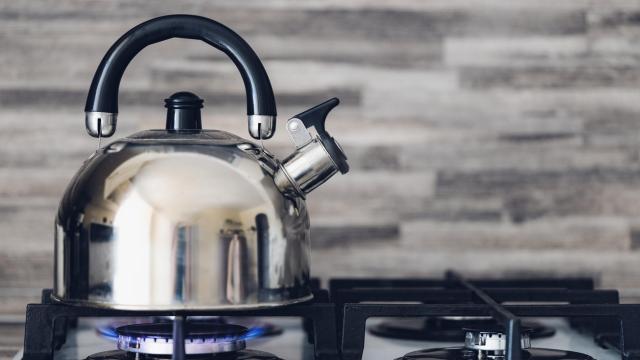At the risk of sounding British (one of my greatest fears), I find myself saying “it’s tea time” no less than eleven times a day. Especially when the leaves change colours–literally or metaphorically, depending on where you are–there’s nothing better than curling up with your warm drink of choice.
But when was the last time you checked out the inside of your tea kettle? I know that my kettle is like a good pair of jeans, in that I can put it through a lot of use before considering whether it’s long overdue for a proper wash.
Here’s why it’s probably time to clean inside your tea kettle, though, and how you can get it done with materials you already have around your kitchen.
How does your tea kettle get gross?
You’re just using a tea kettle to boil water, right? How bad can it get?
Take a peek inside your kettle and you might see the mineral deposit build-up that occurs when you go more than a few weeks without cleaning it. Most likely what you’ll find is limescale, a white, chalky deposit that commonly forms around your sink or bathroom tiles. According to American Home Water and Air (AHWA), limescale is composed of the calcium and carbonate ions found in hard water (here’s AHWA’s breakdown of hard versus soft water).
Additionally, if you let water sit in your kettle for days (or weeks) at a time, you might start to see some rust forming in there.
The good news is that we have a quick and easy cleaning fix to get your kettle back in tip-top shape. We’ve previously gone over how to clean your electric kettle with citric acid powder, but below is another method originally found in Real Simple.
What you need to clean your tea kettle
- White vinegar
- Baking soda
- Lemon juice
Steps to clean inside your kettle
Add a quarter cup of white vinegar and two cups of water to the kettle. Simmer for 20 minutes. Let cool and rinse thoroughly.
You can stop here if the mineral build-up washes away from the vinegar, or you can keep going for an even deeper clean:
- Combine two tablespoons baking soda, two tablespoons lemon juice, and water in the kettle.
- Boil for 30 minutes (making sure there’s always water in the kettle).
- Let cool, then rinse thoroughly and dry.
Prevent future build-up
The easiest way to prevent rust and limescale from forming in the first place is to empty your kettle of all water after using it, taking extra care not to let water sit in it night after night.
And don’t forget that you should also regularly wash your kettle with dish soap, just like you (hopefully) do with all your other dishes. Now, go enjoy yourself a proper cuppa tea.

Leave a Reply
You must be logged in to post a comment.